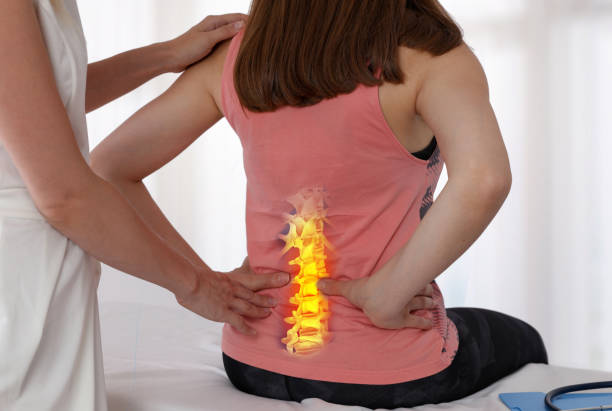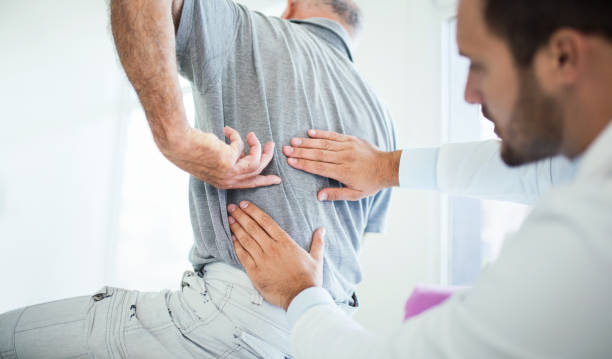A major health crisis or injury can leave you with limited function. Physiotherapy can help you regain movement and increase your ability to live life to its fullest.
Embracing PMP philosophy requires a commitment to work hard at both physical and mental self-management skills. To some patients this is counterintuitive and can feel like an admission of failure by medical treatment.

Strengthen Your Core
In many ways, your core is the foundation of everything you do. Whether you’re playing a sport, gardening or doing a household chore, your body relies on the core muscles for stability and control. Without a strong core, you can easily develop muscle strains, back pain, or injuries to other joints.
Your core includes the front and side abdominal muscles, the back muscles that run along your spine (the erector spinae and multifidi muscles), your diaphragm, and your pelvic floor muscles. You can strengthen these muscles with exercises like sit-ups, planks, or crunches, but you can also engage your core by simply breathing. Try forcefully taking a deep breath and feeling your stomach muscles contract. This exercise activates not only your abdominal muscles, but all the other muscles that support the trunk.
Strengthening your core muscles can help prevent pain and injury from everyday movements such as squatting to pick up a box, reaching overhead to grab something, or walking down the stairs. Having a strong core also improves your balance and stability, making it easier to walk on uneven or slippery surfaces and stay upright when standing in one place.
Keeping your core strong can also prevent back pain from repetitive activities such as vacuuming, washing dishes, or mowing the lawn. And, a strong core can improve performance in many sports and recreational activities including golfing, tennis or other racquet sports, running, swimming, rowing, kayaking, and biking.
Re-educate Your Muscles
The connection between mind and body is essential for movement, pain management and healthy living. Unfortunately, many people find themselves disconnected from their bodies and end up relying on pills and doctor visits for relief. Rather than consuming medicine that provides temporary relief, physiotherapy can teach you techniques to reduce pain in a safer and more long-term way.
The most basic part of this is restoring the nerve signals between muscles and the brain that tells you where, when, how fast and how hard to move. This is accomplished by using a technique called neuromuscular re-education. This helps to restore the normal movement patterns that were learned during healthy and uninjured years.
One of the best ways to do this is with neuromuscular electrical stimulation (NMES). NMES uses small electrodes placed on the muscle that are stimulated by mild pulses of electricity. This type of electrical stimulation teaches the muscle to contract in a more natural and controlled manner. Studies show that NMES can prevent atrophy, help maintain muscle strength, and even support recovery from invasive knee surgeries.
Depending on the severity of your condition, physio Heidelberg will determine how best to use NMES. They may combine it with re-education techniques, evidence-based individualized exercise programs, and specific motor learning/functional tasks.

Restore Range of Motion
Whether you have a shoulder injury, back problem or knee surgery, restoring range of motion is a crucial part of your recovery. Without a healthy range of motion, your body’s movement patterns are altered and you’re at a greater risk for injury. Restoring your full range of motion allows you to move comfortably, reduces pain and stiffness, increases mobility and enhances the overall quality of your life.
Range of motion (ROM) refers to the distance and direction a joint moves between a flexed (bent) position and an extended (straight) position. It’s one of the dimensions used in Functional Capacity Evaluations to measure flexibility. There are three types of ROM exercises: passive, active-assistive and active, with each type measuring how much you can move a joint voluntarily.
A physical therapist can perform a variety of ROM exercises to restore your range of motion and increase flexibility. These can include stretching, passive movement of a joint using a machine or splinting to stretch muscles. Studies show that well-designed ROM exercises, performed by a trained physical therapist and supervised by a physician, can significantly improve the range of motion in joints. Adding these types of movements to your daily routine and monitoring how your body feels are important to staying on track with your recovery. You’ll also be able to give your doctor and physical therapist a more accurate picture of how your injury is impacting you.
Discover the Joy of Movement
Whether you’re a regular at the gym or you’ve never worked out before, it’s easy to think of exercise as a chore—just one more thing on your to-do list. But when you discover the joy of movement, it can transform your relationship with your body and your mind. It can also help you find more joy and meaning in your daily life, according to a new book by Stanford psychology lecturer Kelly McGonigal.
Her latest book, The Joy of Movement: How Exercise Helps Us Find Happiness, Hope, Connection, and Courage, dives into the science behind exercise. She explains how a range of emotions—from the brain chemistry changes caused by exercise (like endorphins, dopamine, and endocannabinoids) to the release of lactate in your muscles (like an antidepressant)—makes physical activity a powerful tool for self-care.
In her research, she’s found that people who exercise regularly report higher levels of happiness and satisfaction in their lives, a greater sense of purpose, more gratitude, love, and hope, and stronger social connections—all of which can help them cope with pain.
Adding a daily dose of exercise to your routine is a big step, especially when you’re dealing with pain. But if you stick with it, it can lead to more lasting results and may even prevent pain from recurring in the first place.